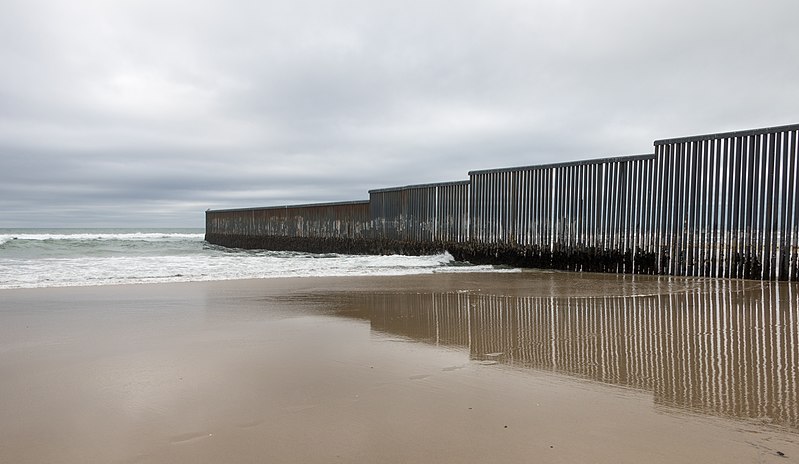By Kira Liljegren and Piya Garg
Last month, violence erupted along the disputed ⅓ of the Kyrgyzstan-Tajikistan border. The recent escalation is yet another chapter in a long history of border conflict between the two countries, whose clashes are generally quickly resolved but often threaten to spiral into all-out war.
While both countries are former Soviet republics, Kyrgyzstan is more resistant to Russian intervention, whereas Tajikistan, the poorest country in Central Asia, remains heavily dependent on Russian aid and influence. Until countries in the region are able to break completely free from the Russian grip, this conflict will continue to pose a danger to Central Asians.
Just last year, over 50 people were killed and several hundred injured in a conflict that originated over water resources. This time around, the toll is even higher, with over 100 estimated deaths (at least 37 of whom were civilians, including 4 children). Hundreds more were injured and tens of thousands were displaced.
Fighting reportedly began when Kyrgyz and Tajik border guards stationed along the border in the Batken region opened fire on one another. Both sides involved have accused the other of shooting first, but it is unclear who shot first.
The violence then spread, with accounts emerging of homes being burned and pillaged on both sides of the border and roughly 137,000 residents of the Kyrgyz village of Ak-Sai being forced to evacuate. The two countries signed a ceasefire in Uzbekistan on Sept. 16, though there have been reports of continued shootings since that date.
Beyond the heartbreaking tragedy of loss and displacement characteristic of any violent conflict, the significance of these clashes is their place as a part of the larger pattern of increasing violence in the post-Soviet space as of late, beginning with Russia’s invasion of Ukraine earlier this year and followed by Azerbaijan’s recent attacks on Armenia.
Although each of these countries (Armenia, Azerbaijan, Kyrgyzstan, Tajikistan and Ukraine) are independent from Russia, that independence came only begrudgingly with the fall of the USSR. Several autonomous ethnic minority regions remain within the borders of modern-day Russia to this day.
Even for the countries that have managed to break free from Russia’s authoritarian grip, their freedom has, in most cases, been accompanied with varying degrees of governmental instability. In post-Soviet Central Asia, this instability can be largely attributed to the way in which borders were drawn under Soviet rule.
Very little attention was paid to either the ethnic or geographical makeup of the areas where boundaries were drawn on new maps. Tajik President Emmomali Rahmon underlined this sentiment in a recent speech in which he called out Russia for not supporting and investing in smaller countries after the USSR collapsed.
In practice, this lack of consideration for post-Soviet countries means there were ethnic Uzbeks who suddenly found themselves living in Kyrgyzstan and ethnic Tajiks who woke up to discover they now resided in Uzbekistan. People were separated from their ethnic group and were suddenly an ethnic minority subject to discrimination. To this day, there remain thousands of kilometers of non-demarcated and delineated borders, which become hotspots for misunderstandings and violence.
Border disputes and violence between Kyrgyzstan and Tajikistan are not new, but the root cause of this recent aggression may be different than previous occurrences. In the past, border clashes were sparked due to disputes over Soviet-era border demarcations in the Ferghana Valley and water resource issues. This time around, however, there may have been a political strategy involved on the part of Tajikistan.
Tajik President Rahmon, who has been in autocratic power for almost thirty years, is reportedly stepping down from power soon, and will transfer power to his son. As once suggested by Nicholas II, the last Tsar of Russia, what Rahmon’s rationale may be in drastically increasing border aggression could be to have a “short, victorious war” to boost national morale and demonstrate to its neighboring countries that Tajikistan will still be a force to be reckoned with.
It is also notable that this recent outbreak of violence between Kyrgyzstan and Tajikistan started while the 22nd annual summit of the Shanghai Cooperation Organization (SCO) was taking place in Samarkand, Uzbekistan, during which the leaders of Kyrgyzstan, Russia and Tajikistan, among others, met in person.
There was an opportunity for the Kyrgyz and Tajik presidents to discuss the very real and dangerous issues at the border, but they did not take serious measures to prevent further violence beyond a symbolic commitment to diplomacy. This is especially frustrating considering the recent fighting that broke out appeared to be premeditated in nature, rather than the regularly occurring squabble.
Although the conflict technically started on Sept. 17, there are reports that heavy military equipment and troops were used by Tajikistan three days prior, signaling a deliberate escalation early on in the fighting. Furthermore, Tajikistan targeted undisputed Kyrgyz territory in Batken, which is not near the border, most likely to drive civilians out of the area in what seems to be a planned attack ordered by President Rahmon.
It is dangerous to not recognize this situation as anything but an act of Tajik aggression, because it feeds into a larger narrative of downplaying the severity of or outright ignoring the existence of conflict in Central Asia and the post-Soviet region as a whole. This indifference has devastating consequences on Kyrgyz and Tajik civilians’ lives and inter-country relations, leaving a dire issue out of mainstream international law and media.
As a result, people’s lives will continue to be harmed, leaving space for the conflict to escalate, all while going largely unnoticed by the international community. Even though it only took place over the course of ten hours, the sheer scale of the violence and lack of effective communication between the Kyrgyz and Tajik leaders makes the prospect of long lasting peace in the region without third-party mediation improbable.
This can only happen if the conflict is given the global and regional attention it warrants, as well as Western support, such as U.S. House Speaker Nancy Pelosi’s public show of support for Armenia during this period.
Russia is also complicit in playing into the narrative that the border conflict between Kyrgyzstan and Tajikistan is merely another instance of the perpetual skirmishes between the two. By not taking a principled stance and calling on both sides to “de-escalate” the fighting, Russia’s nonintervention is an attempt to maintain its influence over both the Central Asian countries.
Although the USSR has long collapsed, Russia’s status as a global superpower has resulted in its perpetual push for control over the former Soviet states, and for their dependence on Russia, especially economically.
For example, just a few weeks prior to the outbreak of violence, Kyrgyz Chairman of Cabinet of Ministers Akylbek Japarov and Russian Prime Minister Mikhail Mishustin met to discuss initiatives for economic cooperation between Russia and Kyrgyzstan.
While Kyrgyzstan and Kazakhstan saw public protests against Russia’s recent imperialist activities in Ukraine,Tajikistan has remained neutral; although there have been no public demonstrations in favor of Russia’s actions, there have been none against them, either. As long as they remain under Russian influence, Central Asian countries will continue to struggle to resolve long-standing disputes without external mediation and support.
These factors will therefore only become more imperative as the possibility of further violence escalates.







